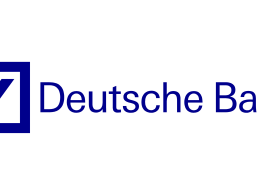Who’ll be watching the punch bowl in 2018?
by Kristina Hooper, Global Market Strategist, Invesco Ltd., Invesco Canada
Last week saw a confluence of central bank meetings and decisions over the course of two days. They revealed central banks that are in the process of – or on the verge of – tightening. I was reminded of former Federal Reserve (Fed) Chair William McChesney Martin, who said the central task of his job was “to take away the punch bowl just when the party gets going.” But is the party really just getting going – or is it getting long in the tooth? And, most importantly, who is the chaperone? And how strict are they?
The Federal Reserve hikes rates, as expected
Last week saw the final Federal Open Market Committee (FOMC) meeting of 2017, and there were few surprises. The FOMC raised the Federal Funds Target Rate, as expected. However, despite increasing growth expectations, it did not alter inflation expectations and it maintained its policy prescription of three rate hikes for 2018. This was also the last press conference for outgoing Chair Janet Yellen. We learned from her that asset values are elevated, but are not of major concern to her, and that she believes the proposed tax reform package will be stimulative while adding to the national debt. However, at this point she does not seem too concerned about the economy overheating, as it would be very difficult to push growth significantly higher. However, she seemed to welcome the possibility that the tax bill could raise productivity growth. With regard to inflation, she suggested that the Fed may want to rethink what is behind inflationary trends, hinting at the possibility of a paradigm shift for inflation.
The Bank of England tries to navigate a difficult situation
The Bank of England’s (BOE) last meeting of 2017 provided few surprises as well, with the BOE deciding to maintain its key rate at its current level, after raising it last month. It also expects limited rate hikes in the future: “Any future increases … are expected to be at a gradual pace and to a limited extent.” The BOE is in a virtually impossible situation, attempting to tamp down high inflation (brought on by Brexit-related currency changes) without stifling a weakening economy. The BOE explained its quandary, recognizing that Brexit is creating substantial uncertainty: “Developments regarding the United Kingdom’s withdrawal from the European Union – and in particular the reaction of households, businesses and asset prices to them – remain the most significant influence on, and source of uncertainty about, the economic outlook.” Thus far (with the exception of last month), the BOE has erred on the side of accommodative monetary policy. But with inflation hitting 3.1% in November,1 we have to wonder if higher inflation will force it to get more aggressive with tightening.
The European Central Bank hints at more rapid tightening
In addition, the European Central Bank (ECB) met last week, deciding, as expected, to maintain the status quo with its monetary policy stance, confirming its previous decision to begin tapering in January. But while last week’s ECB meeting may have seemed like something to yawn at, it was anything but. That’s because the ECB has substantially increased its growth projections for next year: from 1.8% to 2.3%.2 In addition, ECB President Mario Draghi expressed “increasing confidence” in the prospect for rising inflation. This suggests that, if projections come to fruition, the ECB may need to start putting away the punch bowl a bit sooner – even if it seems unwilling to do so at this juncture.
Who will be monitoring the punch bowl in 2018?
As I think about 2018, I’m reminded of an experience I had in high school. As a member of student government, I was tasked with assisting the chaperones of a mixer for underclassmen. There were a number of chaperones working different shifts over the course of the evening, from vigilant nuns (who seemingly had eyes in the back of their heads) to young, inexperienced teachers (who signaled their novice status with their wide, frightened eyes). And then there were the parent chaperones, a special breed unto themselves. While most chaperones devoted their shift to maintaining a certain distance between dancing couples and checking students for the smell of alcohol, there was one chaperone in particular (a parent) who decided to participate in the fun instead. She was out on the dance floor, dancing alongside the students – but not doing much surveillance. The students were dismayed to see her shift soon come to an end, replaced by a very strict teacher who immediately turned up the lights and dialed down the fun.
I can’t help but wonder if we might be living through a similar scenario with the FOMC, and whether all or most of Yellen’s statements at her press conference last week were moot. While it is assumed that the 2018 FOMC will maintain the status quo in terms of monetary policy, that may be a dangerous assumption – there are no guarantees that, when Yellen’s shift is over, policies will remain the same. After all, the 2018 Fed will have a cast of new “chaperones” – a new chair, vice chair and several potentially more hawkish new members such as Marvin Goodfriend, who has been a critic of quantitative easing and a proponent of a more rules-based monetary policy in the past. Even the two dissenters from the December rate hike decision – the Minneapolis Fed’s Neel Kashkari and the Chicago Fed’s Charles Evans – will not be voting members of the 2018 FOMC. And while chaperones may remain the same at other key central banks, it doesn’t mean they won’t become stricter as conditions change.
This means that markets in 2018 are like jubilant high school students at a mixer who don’t know what their next chaperone will be like and which infractions will be targeted. We don’t know how worried the Fed or other central banks will be about higher growth and the prospects for higher inflation, or which metrics they will follow most closely. The possibility of a stimulative tax reform bill in the U.S. will only add to that uncertainty.
Happy Holidays
This is my last Weekly Market Review for 2017. I will be back in January to analyze the critical market events facing us in the new year. Happy Holidays to you and yours
Subscribe to the Invesco Canada blog and get Kristina Hooper’s market reviews in your inbox.
This post was originally published at Invesco Canada Blog
Copyright © Invesco Canada Blog













